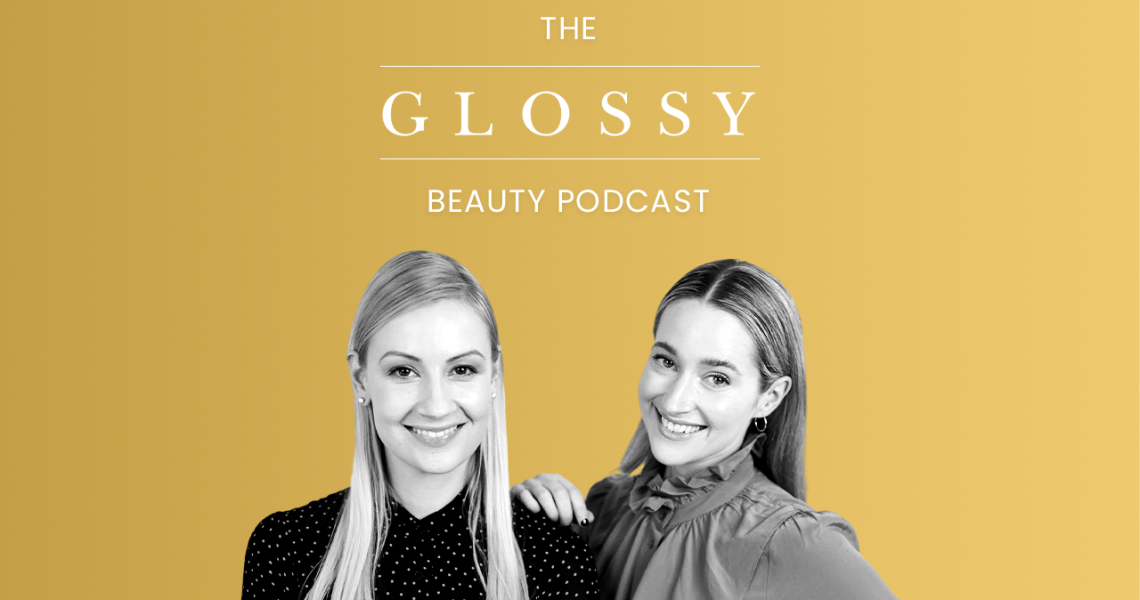Subscribe: Apple Podcasts | Stitcher | Google | Spotify
“Sustainability” was a buzzword in beauty and wellness well before the pandemic. But due to 2020’s stay-at-home orders, coupled with the sheer volume of boxes and waste from online shipping, beauty companies recognized they needed to up their focus on sustainable practices.
For British beauty brand Bybi, which came to market in 2017, its road to “sustainability” has been a work in progress. “The term sustainable is a little bit problematic in itself. It’s not regulated, so what does it even mean?,” said Elsie Rutterford, co-founder of Bybi, on this week’s episode of the Glossy Beauty Podcast.
Rutterford started the natural brand focused on performance with Dominika Minarovic, a friend and colleague from their time in advertising. With no professional beauty experience, the twosome first started a natural beauty content platform called Clean Beauty Insiders before going on to make products in their kitchen. A full-fledged beauty line wasn’t in the cards.
“When we first started, we grew this content platform… We had a book published by Penguin, which was kind of a recipe book for your skin, your hair — all centered around natural ingredients. We were running these events, workshops in central London, where we would bring together people who were interested in making their own beauty products. We spent quite a lot of time just testing out different ways of monetizing the content that we’d sort of begun to do as a hobby. [Products] were never our end goal,” said Rutterford.
But their authentic approach to beauty building yielded more than they bargained for. In December 2020, Bybi raised a $7 million Series A, and it launched into 1,800 Target doors in January. Minarovic said that the brand grew 200% in the pandemic and has high hopes for Target to be a $10 million to $20 million account.
Ad position: web_incontent_pos1
Below are additional highlights from the conversation, which have been lightly edited for clarity.
A holistic point of view
Rutterford: “When we decided to start a product brand, we then started to dig into exactly what that entails, it was an incredibly archaic industry that was completely steeped in bad practices that were really damaging to the environment. And at that point, beauty wasn’t talking about it. Fashion was, food and drink were, but beauty was not. It’s only been in the last couple of years that beauty has jumped on the bandwagon. And as you quite rightly say, the way that beauty or the lens that beauty has put on sustainability has been around recyclability of packaging, which is, again, very problematic, because there’s no one universal standard. That aside, when we first started, we tried to do everything … every choice that we made was driven by being better for the environment.”
Narrowing down a focus
Rutterford: “It became quite difficult to make choices… It also became very difficult for us to communicate to the consumer what we were doing. We were doing so much, but it felt like the actual impact we were having was so little. So we actually did a huge [amount] of work to understand, in our entire supply chain, what was driving the biggest environmental impact and [the biggest] negative environmental impact, and we just kept coming back to carbon. Time and time again, carbon is the biggest contributor to climate change. But it’s very difficult to talk about within beauty because you can’t see it, you can’t feel it, you can’t touch it in the same way that you can [with] beauty packaging. And, it’s not very sexy to start talking about fossil fuels when you’re talking about high-performance skin care. What we found was that centering in on one sustainable focus, one mission for the brand, helped us in our overall mission of becoming more environmentally responsible. Once we decided on that, it then became much easier to communicate to the customer. It then became much easier to drive our team and get our team bought into our sustainability mission because we had a very clear goal.”
Growth mode
Minarovic: “If we could partner with someone at a larger scale and really have that positive impact, that would be really exciting for us — to be able to share what’s happening behind the scenes at Bybi, open the doors and allow other businesses to learn from our supply chain… But I think we’re so early on in our journey, and we’ve got so much to do as an independent brand. At the moment, we’re hyper-focused on Target; the growth at Target so far has been phenomenal. We’re so excited about where that account is going. We want that to be a $10 million to $20 million account for us. The scale is there, and the customer is there. That is definitely our short-term goal. The business has always seen good growth — we’ve been growing 200% year-on-year. And we’re hoping that will continue on as we grow and get larger in size. The business has taken a dramatic shift upward since we launched into the U.S. because, obviously, the scale is phenomenal. We are international, but there’s no market quite like the U.S. But we’re about thoughtful growth. It’s not about artificial [growth]. We want to have longevity as a brand, because we have so much depth to us that you don’t see with a lot of brands. [You see brands] come to market really quickly and then exit really quickly. We want the brand to be around in 10-20 years. We don’t want to just be a logo on someone’s website.”




